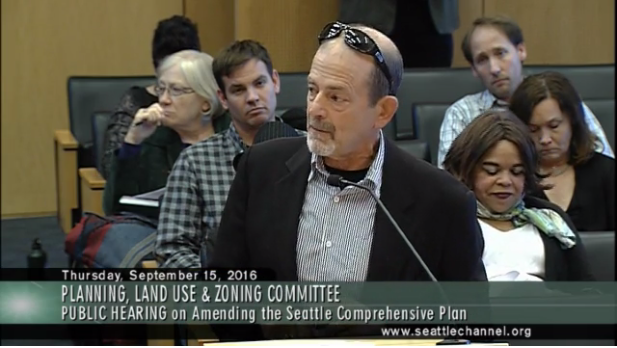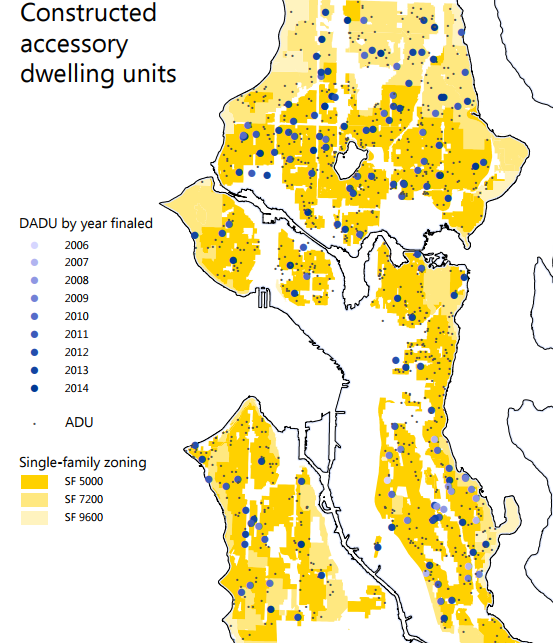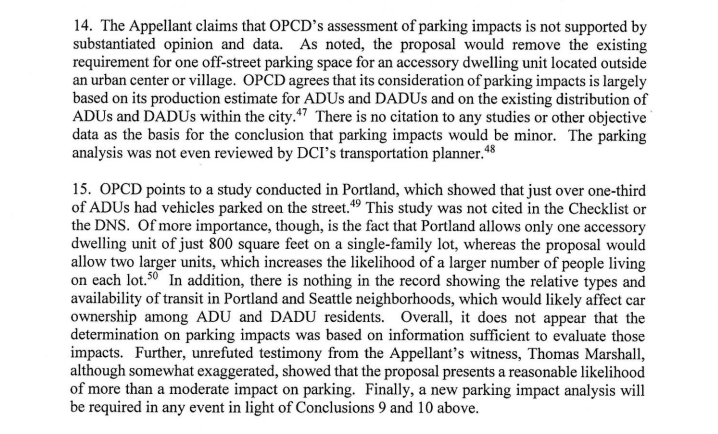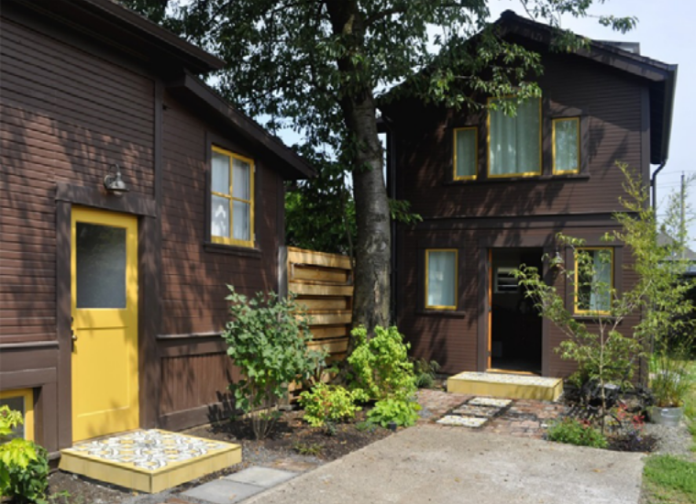In a blow to the Housing Affordability & Livability Agenda (HALA), Hearing Examiner Sue Tanner issued a ruling that the City of Seattle must conduct an Environmental Impact Statement (EIS) before moving ahead with its proposed accessory dwelling unit (ADU) changes to single-family residential zones across the city. Drafting and finalizing an EIS would likely delay implementation of the law by at least a year.
Removing code barriers to increase the supply of ADUs was one of the eight “Highest Impact Recommendations” in the HALA committee report. Councilmember Mike O’Brien authored the bill largely following the HALA framework to made it easier to build ADUs. Heeding HALA advice, the law would allow one ADU and one detached accessory dwelling unit (DADU), which are commonly nicknamed backyard cottages, on lots that meet the size requirements.
With roughly 120,000 lots zoned single-family, better ADU laws could have a big impact. The City predicted O’Brien’s bill would generate as many as 4,000 units over twenty years. The HALA committee expected ADUs and DADUs to serve moderate income households in the 80% to 120% area median income (AMI) range. The existing more stringent ADU laws have generated fewer than 300 units (221 last I heard) in the seven years have been legal in Seattle’s single-family residential neighborhoods.


The legal challenge to the ADU law was brought by Queen Anne Community Council board member and homeowner activist Marty Kaplan, who raised more than $25,000 from like-minded folks around the city to cover legal fees. (Josh Feit has good background here.) In addition to the transparency issues that ultimately seemed to tip the hearing examiner against the proposed law, Kaplan’s gripes included parking impacts and a convoluted argument that allowing one ADU and one DADU per lot might open up a development frenzy eating up “affordable” single-family homes in Seattle. Newsflash: single-family homes in Seattle are already not affordable to low and moderate earners.
The hearing examiner also highlighted parking concerns. Bizarrely, the logic of our parking industrial complex is baked into our environmental laws. Thus, preserving parking is misconstrued as an environmental asset, much to the chagrin of climate change activists who’d like to see fewer cars and fewer tailpipe and embodied car emissions rather than more. In fact, environmentalists argue transit-rich cities like Seattle should lead in a societal transition away from car dependence. The environmental impact of a few more people parking on the street (apparently one third of ADU households if Portland is any guide) seems much less than paving more off-street parking spaces because of code requirements enabling bad environmental decisions. More parking spaces mean more impermeable surfaces, more runoff, and more induced demand for driving. There’s your environmental impact.

The City could appeal the ruling, but that process could take as long as drafting an EIS. The case perhaps provides a lesson for legislation seeking to overcome the homeowner lobby: make sure to include research that thoroughly substantiates the bill and meets the conditions of the SEPA Checklist well beyond what the hearing examiner would require. Also expect opponents to question City staff’s objectivity and issue Public Records Act requests to obtain communications to build their case. If we hope to quickly and efficiently implement HALA to lessen the housing affordability crisis we’re experiencing, we need to be surgical in our legislative efforts.
W-16-004 – HE Findings and Decision – 12.13.16 by The Urbanist on Scribd
Doug Trumm is publisher of The Urbanist. An Urbanist writer since 2015, he dreams of pedestrian streets, bus lanes, and a mass-timber building spree to end our housing crisis. He graduated from the Evans School of Public Policy and Governance at the University of Washington in 2019. He lives in Seattle's Fremont neighborhood and loves to explore the city by foot and by bike.


